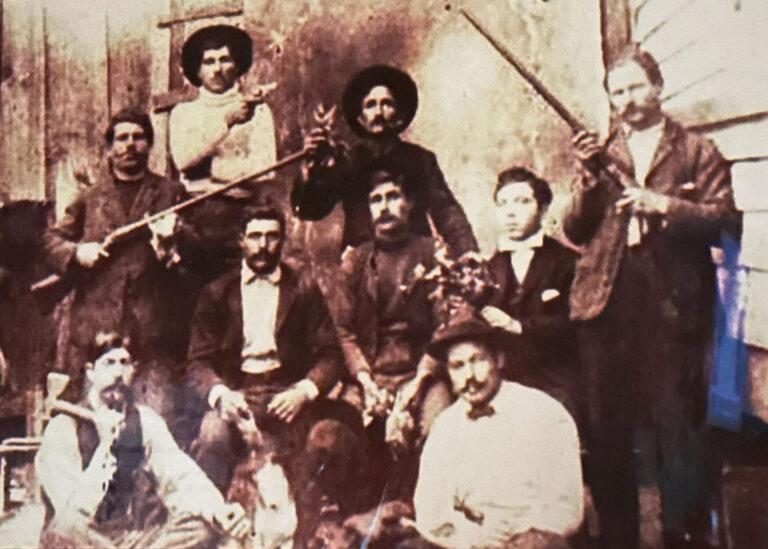Legacy Post Disclaimer
This is a #Legacy post imported from The Apalachicola Time’s previous platform. If you’re experiencing issues with this article, please email us at news@nevespublishing.com.
Bear pays Apalach a visit, tours the cemetery
This story has been updated from an earlier version to include comments from A.J. Smith’s Facebook Live and an interview with David Telesco, coordinator of FWC’s bear management program.
If you’ve seen a bear lumbering through backyards in Apalachicola, your eyes are not deceiving you.
The report of a nice-sized Florida black bear was first called in to the Apalachicola Police Department Saturday afternoon, according to Chief Bobby Varnes, and since that time, there’s been quite a few reports.
Varnes said on Sunday morning the department got a call that the bear was spotted along 11th and 12th streets, near the Apalachicola Housing Authority.
Frank Hutchinson, who’s renting for a month in Apalachicola, said he saw it Sunday morning near 7th and 8th street between Avenue B. “He wasn’t fat but it also wasn’t short,” he said. “It went right by a cat but it didn’t want it. I don’t know what the cat thought.“
And then Hutchinson heard it was later spotted near Avenue D and 5th Street.
“We have in past years gotten calls here and there, but it’s not too often that we get calls,” said Varnes. “We’ll go in the area and see if we can get it out back in the woods.”
Sheriff A.J. Smith posted a Facebook Live video in which he said his office had notified the Florida Fish and Wildlife Conservation Commission of the bear. He urged residents to keep their distance and not to feed the bear.
David Telesco, coordinator of FWC’s bear management program said that law enforcement officers went to Apalachicola on multiple occasions on Saturday and Sunday but saw nothing.
“That’s not a surprise. What people are describing is a young animal moving through, not staying in one place,” he said.
“The reports we’re getting is that there is nothing to indicate the bear is settling in, and using it as a permanent property,” Telesco said. “If it sticks around and starts getting food, we would need to take action to prevent that.
“That’s a lanky young animal; it’s not wasting away,” he said. “That bear eventually is going to fill out.”
He said at this time of year, the females kick the young males out and they must figure out a way to survive in the wild.
“He has to find a range where no one’s going to pick on him,” Telesco said. “They start wandering away from where they know. He’s got to stay away from other males or he’s going to get beat up.
“We don’t typically have bears living full-time in Apalachicola,” he said. “The hope is he’s going to behave himself.”
He said because the bear is not consistently in one spot, doing any one thing, it does not make sense to put out traps.
“He would keep moving,” Telesco said. “The traps work when a bear is consistently in one area. It would not be the most effective way to address it.”
He said that while residents should not approach the animal, or leave food out, they should make him feel unwelcome.
“We really would like people to scare it off,” Telesco said. “If you’re sitting in your house, go ahead, open your door and yell at it.”
An air horn or a car horn could be used as well. “We don’t want it to feel comfortable, even if it’s not eating,” he said. “That’s your yard; you want to let that bear know he’s not welcome.”
He said people should not chase the bear, which can sprint as fast as 35 mph, more than double the speed of an average person. “That could trigger a chase instinct,” Telesco said.
He also cautioned not to “play dead,” a tactic that applies to brown bears but not to the Florida black bear.
He also said that since they are not active predators, a bear is unlikely to harm a pet, and in fact could be scared off by even a small one.
“They don’t like dogs,” Telesco said. “The problem is when they’re with cubs. The ones with cubs are the ones you have to worry about.”
He said that with the proper motivation, bears have been known to swim, and it could venture over to St. George Island.
“We’ve had them go from Eastpoint over to St. George Island,” Telesco said. “They have to be motivated, they have to have a reason to think it’s worth swimming.
“Sometimes they’ll go and beachcomb. They’re there for a couple of days and then they’ll take off,” he said. “They like that thick cover and there’s not much of that on St. George Island.”




Meet the Editor
David Adlerstein, The Apalachicola Times’ digital editor, started with the news outlet in January 2002 as a reporter.
Prior to then, David Adlerstein began as a newspaperman with a small Boston weekly, after graduating magna cum laude from Brandeis University in Waltham, Massachusetts. He later edited the weekly Bellville Times, and as business reporter for the daily Marion Star, both not far from his hometown of Columbus, Ohio.
In 1995, he moved to South Florida, and worked as a business reporter and editor of Medical Business newspaper. In Jan. 2002, he began with the Apalachicola Times, first as reporter and later as editor, and in Oct. 2020, also began editing the Port St. Joe Star.